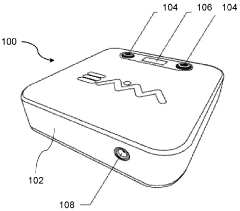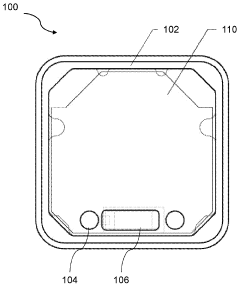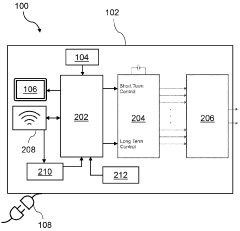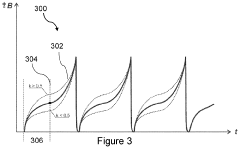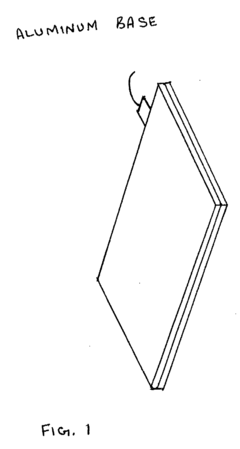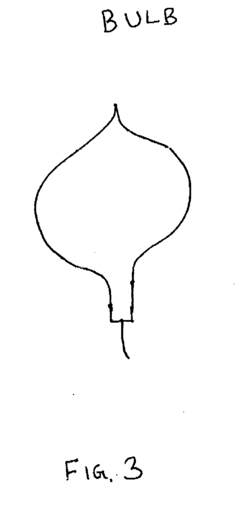How PEMF Therapy Enhances Athletic Performance and Recovery?
AUG 11, 20259 MIN READ
Generate Your Research Report Instantly with AI Agent
Patsnap Eureka helps you evaluate technical feasibility & market potential.
PEMF Therapy Background and Objectives
Pulsed Electromagnetic Field (PEMF) therapy has emerged as a promising technology in the realm of athletic performance enhancement and recovery. This non-invasive treatment method harnesses the power of electromagnetic fields to stimulate cellular activity and promote healing within the body. The history of PEMF therapy can be traced back to the mid-20th century, with its initial applications primarily focused on bone healing and pain management.
Over the past few decades, PEMF therapy has undergone significant advancements, expanding its potential applications to include athletic performance and recovery. The technology's evolution has been driven by a growing understanding of the body's bioelectrical nature and the role of electromagnetic fields in cellular communication and function.
The primary objective of PEMF therapy in the context of athletic performance and recovery is to optimize the body's natural healing processes, reduce inflammation, and enhance overall physical function. By applying specific electromagnetic frequencies to targeted areas of the body, PEMF therapy aims to improve circulation, accelerate tissue repair, and modulate pain perception.
Recent technological trends in PEMF therapy have focused on developing more precise and customizable devices, allowing for tailored treatments that address the unique needs of individual athletes. These advancements have led to increased interest in PEMF therapy among sports medicine professionals and elite athletes seeking innovative methods to enhance performance and expedite recovery.
The potential benefits of PEMF therapy for athletes include reduced muscle soreness, improved joint flexibility, enhanced energy levels, and accelerated recovery from injuries. As research in this field continues to expand, there is growing evidence supporting the efficacy of PEMF therapy in various aspects of athletic performance and recovery.
However, despite the promising results, there are still challenges to overcome in fully understanding the mechanisms of action and optimizing treatment protocols. The current technological landscape is characterized by a diverse range of PEMF devices, varying in frequency, intensity, and application methods. This diversity highlights the need for standardization and further research to establish best practices in the field.
As we look towards the future, the integration of PEMF therapy with other emerging technologies, such as wearable devices and artificial intelligence, presents exciting possibilities for personalized and data-driven approaches to athletic performance enhancement and recovery. The ongoing exploration of PEMF therapy's potential in sports medicine reflects a broader trend towards non-pharmacological, technology-driven solutions in healthcare and performance optimization.
Over the past few decades, PEMF therapy has undergone significant advancements, expanding its potential applications to include athletic performance and recovery. The technology's evolution has been driven by a growing understanding of the body's bioelectrical nature and the role of electromagnetic fields in cellular communication and function.
The primary objective of PEMF therapy in the context of athletic performance and recovery is to optimize the body's natural healing processes, reduce inflammation, and enhance overall physical function. By applying specific electromagnetic frequencies to targeted areas of the body, PEMF therapy aims to improve circulation, accelerate tissue repair, and modulate pain perception.
Recent technological trends in PEMF therapy have focused on developing more precise and customizable devices, allowing for tailored treatments that address the unique needs of individual athletes. These advancements have led to increased interest in PEMF therapy among sports medicine professionals and elite athletes seeking innovative methods to enhance performance and expedite recovery.
The potential benefits of PEMF therapy for athletes include reduced muscle soreness, improved joint flexibility, enhanced energy levels, and accelerated recovery from injuries. As research in this field continues to expand, there is growing evidence supporting the efficacy of PEMF therapy in various aspects of athletic performance and recovery.
However, despite the promising results, there are still challenges to overcome in fully understanding the mechanisms of action and optimizing treatment protocols. The current technological landscape is characterized by a diverse range of PEMF devices, varying in frequency, intensity, and application methods. This diversity highlights the need for standardization and further research to establish best practices in the field.
As we look towards the future, the integration of PEMF therapy with other emerging technologies, such as wearable devices and artificial intelligence, presents exciting possibilities for personalized and data-driven approaches to athletic performance enhancement and recovery. The ongoing exploration of PEMF therapy's potential in sports medicine reflects a broader trend towards non-pharmacological, technology-driven solutions in healthcare and performance optimization.
Market Analysis for PEMF in Sports
The global market for Pulsed Electromagnetic Field (PEMF) therapy in sports is experiencing significant growth, driven by increasing awareness of its potential benefits for athletic performance and recovery. The sports industry, valued at over $500 billion globally, is constantly seeking innovative technologies to enhance athlete performance and reduce recovery times. PEMF therapy has emerged as a promising solution in this context.
The market for PEMF devices in sports is segmented into professional sports teams, individual athletes, sports medicine clinics, and fitness centers. Professional sports teams, particularly in high-impact sports like football, basketball, and soccer, are early adopters of PEMF technology. These teams invest heavily in recovery and performance-enhancing technologies, creating a lucrative market segment for PEMF manufacturers.
Individual athletes, both professional and amateur, represent a growing consumer base for portable PEMF devices. The increasing trend of personalized training and recovery programs has led to a surge in demand for at-home PEMF solutions. This segment is expected to show the highest growth rate in the coming years, as more athletes recognize the benefits of incorporating PEMF therapy into their daily routines.
Sports medicine clinics and rehabilitation centers are another key market segment. These facilities are integrating PEMF therapy into their treatment protocols for sports injuries, offering a non-invasive alternative to traditional recovery methods. The adoption of PEMF in these settings is driving market growth and contributing to wider acceptance of the technology in the sports medicine community.
Geographically, North America dominates the PEMF market in sports, followed by Europe. The presence of major sports leagues, high healthcare expenditure, and early adoption of new technologies contribute to this regional dominance. However, the Asia-Pacific region is expected to witness the fastest growth, driven by increasing sports participation, rising disposable incomes, and growing awareness of sports medicine technologies.
The market is characterized by a mix of established medical device companies and specialized PEMF manufacturers. Key players are focusing on developing portable, user-friendly devices tailored for athletes. Innovation in this space includes the integration of PEMF technology with wearable devices and smartphone applications for personalized treatment protocols.
Challenges in the market include the need for more comprehensive clinical studies to validate the efficacy of PEMF in various sports applications. Additionally, regulatory hurdles in some regions and the high cost of advanced PEMF devices pose barriers to widespread adoption. However, ongoing research and development efforts are expected to address these challenges and further expand the market potential of PEMF therapy in sports.
The market for PEMF devices in sports is segmented into professional sports teams, individual athletes, sports medicine clinics, and fitness centers. Professional sports teams, particularly in high-impact sports like football, basketball, and soccer, are early adopters of PEMF technology. These teams invest heavily in recovery and performance-enhancing technologies, creating a lucrative market segment for PEMF manufacturers.
Individual athletes, both professional and amateur, represent a growing consumer base for portable PEMF devices. The increasing trend of personalized training and recovery programs has led to a surge in demand for at-home PEMF solutions. This segment is expected to show the highest growth rate in the coming years, as more athletes recognize the benefits of incorporating PEMF therapy into their daily routines.
Sports medicine clinics and rehabilitation centers are another key market segment. These facilities are integrating PEMF therapy into their treatment protocols for sports injuries, offering a non-invasive alternative to traditional recovery methods. The adoption of PEMF in these settings is driving market growth and contributing to wider acceptance of the technology in the sports medicine community.
Geographically, North America dominates the PEMF market in sports, followed by Europe. The presence of major sports leagues, high healthcare expenditure, and early adoption of new technologies contribute to this regional dominance. However, the Asia-Pacific region is expected to witness the fastest growth, driven by increasing sports participation, rising disposable incomes, and growing awareness of sports medicine technologies.
The market is characterized by a mix of established medical device companies and specialized PEMF manufacturers. Key players are focusing on developing portable, user-friendly devices tailored for athletes. Innovation in this space includes the integration of PEMF technology with wearable devices and smartphone applications for personalized treatment protocols.
Challenges in the market include the need for more comprehensive clinical studies to validate the efficacy of PEMF in various sports applications. Additionally, regulatory hurdles in some regions and the high cost of advanced PEMF devices pose barriers to widespread adoption. However, ongoing research and development efforts are expected to address these challenges and further expand the market potential of PEMF therapy in sports.
Current PEMF Technology Status and Challenges
Pulsed Electromagnetic Field (PEMF) therapy has gained significant attention in recent years for its potential to enhance athletic performance and recovery. However, the current status of PEMF technology presents both promising advancements and notable challenges.
One of the primary challenges in PEMF technology is the lack of standardization in treatment protocols. While numerous studies have demonstrated positive effects on tissue repair, pain reduction, and overall recovery, there is still considerable variation in the optimal frequency, intensity, and duration of PEMF treatments for specific athletic applications. This inconsistency makes it difficult for practitioners and athletes to determine the most effective approach for their particular needs.
Another significant challenge lies in the miniaturization and portability of PEMF devices. While larger, stationary units are commonly used in clinical settings, there is a growing demand for compact, wearable devices that athletes can use during training or competition. Developing such devices while maintaining therapeutic efficacy and battery life presents ongoing technical hurdles for manufacturers.
The integration of PEMF technology with other recovery modalities and performance monitoring systems is an area of active development. Researchers are exploring ways to combine PEMF therapy with biofeedback, heart rate variability monitoring, and other physiological markers to create more personalized and adaptive treatment protocols. However, the complexity of these integrated systems poses challenges in terms of data interpretation and user-friendly implementation.
Regulatory considerations also play a significant role in the current PEMF technology landscape. While some PEMF devices have received FDA clearance for specific medical applications, their use in athletic performance enhancement often falls into a regulatory gray area. This uncertainty can impact the adoption and development of PEMF technology in sports medicine and training environments.
From a global perspective, PEMF technology development is not evenly distributed. Countries like the United States, Germany, and Japan are at the forefront of PEMF research and device manufacturing. However, access to advanced PEMF technology remains limited in many regions, creating disparities in its application across different sports and geographical areas.
The efficacy of PEMF therapy across various athletic disciplines is another area requiring further investigation. While some sports, such as those involving high-impact activities or repetitive motions, have shown promising results with PEMF therapy, its effectiveness in other athletic contexts is less well-established. This variability in outcomes across different sports and types of physical exertion presents both a challenge and an opportunity for targeted research and development.
In conclusion, while PEMF technology shows great promise in enhancing athletic performance and recovery, it faces several challenges that need to be addressed to fully realize its potential. Overcoming these obstacles will require continued research, technological innovation, and collaboration between scientists, engineers, and sports medicine professionals.
One of the primary challenges in PEMF technology is the lack of standardization in treatment protocols. While numerous studies have demonstrated positive effects on tissue repair, pain reduction, and overall recovery, there is still considerable variation in the optimal frequency, intensity, and duration of PEMF treatments for specific athletic applications. This inconsistency makes it difficult for practitioners and athletes to determine the most effective approach for their particular needs.
Another significant challenge lies in the miniaturization and portability of PEMF devices. While larger, stationary units are commonly used in clinical settings, there is a growing demand for compact, wearable devices that athletes can use during training or competition. Developing such devices while maintaining therapeutic efficacy and battery life presents ongoing technical hurdles for manufacturers.
The integration of PEMF technology with other recovery modalities and performance monitoring systems is an area of active development. Researchers are exploring ways to combine PEMF therapy with biofeedback, heart rate variability monitoring, and other physiological markers to create more personalized and adaptive treatment protocols. However, the complexity of these integrated systems poses challenges in terms of data interpretation and user-friendly implementation.
Regulatory considerations also play a significant role in the current PEMF technology landscape. While some PEMF devices have received FDA clearance for specific medical applications, their use in athletic performance enhancement often falls into a regulatory gray area. This uncertainty can impact the adoption and development of PEMF technology in sports medicine and training environments.
From a global perspective, PEMF technology development is not evenly distributed. Countries like the United States, Germany, and Japan are at the forefront of PEMF research and device manufacturing. However, access to advanced PEMF technology remains limited in many regions, creating disparities in its application across different sports and geographical areas.
The efficacy of PEMF therapy across various athletic disciplines is another area requiring further investigation. While some sports, such as those involving high-impact activities or repetitive motions, have shown promising results with PEMF therapy, its effectiveness in other athletic contexts is less well-established. This variability in outcomes across different sports and types of physical exertion presents both a challenge and an opportunity for targeted research and development.
In conclusion, while PEMF technology shows great promise in enhancing athletic performance and recovery, it faces several challenges that need to be addressed to fully realize its potential. Overcoming these obstacles will require continued research, technological innovation, and collaboration between scientists, engineers, and sports medicine professionals.
Current PEMF Solutions for Athletes
01 PEMF therapy for athletic performance enhancement
Pulsed Electromagnetic Field (PEMF) therapy can be used to improve athletic performance by enhancing muscle strength, endurance, and overall physical capabilities. This therapy involves applying electromagnetic fields to the body, which may stimulate cellular activity and promote better energy production in muscle tissues.- PEMF therapy for athletic performance enhancement: Pulsed Electromagnetic Field (PEMF) therapy can be used to improve athletic performance by enhancing muscle strength, endurance, and overall physical capabilities. This non-invasive treatment stimulates cellular activity, potentially leading to improved energy production and faster recovery times for athletes.
- PEMF devices for injury recovery and pain management: Specialized PEMF devices are designed to aid in injury recovery and pain management for athletes. These devices apply targeted electromagnetic fields to affected areas, promoting tissue repair, reducing inflammation, and alleviating pain, thus facilitating faster return to training and competition.
- Wearable PEMF technology for continuous treatment: Wearable PEMF devices allow athletes to receive continuous treatment during training, competition, or recovery periods. These portable systems can be integrated into clothing or accessories, providing ongoing electromagnetic stimulation to support performance and recovery without interrupting the athlete's routine.
- Combination of PEMF with other therapeutic modalities: PEMF therapy can be combined with other therapeutic modalities such as cryotherapy, heat therapy, or compression therapy to enhance its effectiveness in athletic recovery. This multi-modal approach may provide synergistic benefits, addressing various aspects of recovery and performance optimization simultaneously.
- Customizable PEMF protocols for individual athletes: Advanced PEMF systems offer customizable treatment protocols tailored to individual athletes' needs. These systems allow for adjustments in frequency, intensity, and duration of electromagnetic pulses based on factors such as the athlete's sport, training phase, and specific recovery requirements, optimizing the therapy's effectiveness for each user.
02 PEMF therapy for post-exercise recovery
PEMF therapy can be applied to accelerate recovery after intense physical activity or sports performance. It may help reduce muscle soreness, inflammation, and fatigue by promoting better circulation and cellular repair processes. This can lead to faster recovery times and improved overall athletic performance.Expand Specific Solutions03 Wearable PEMF devices for athletes
Wearable PEMF devices designed specifically for athletes have been developed to provide convenient and targeted therapy. These devices can be worn during training, competition, or recovery periods, allowing for continuous or intermittent PEMF application to specific body areas to enhance performance and recovery.Expand Specific Solutions04 Combination of PEMF with other therapeutic modalities
PEMF therapy can be combined with other therapeutic modalities such as heat therapy, cryotherapy, or compression therapy to enhance its effects on athletic performance and recovery. This multi-modal approach may provide synergistic benefits for athletes in terms of performance enhancement and faster recovery.Expand Specific Solutions05 Customized PEMF protocols for different sports
PEMF therapy protocols can be customized for different sports and athletic activities, taking into account the specific physical demands and recovery needs of each sport. This tailored approach may involve adjusting the frequency, intensity, and duration of PEMF application to optimize its benefits for athletes in various disciplines.Expand Specific Solutions
Key Players in PEMF Sports Industry
The competitive landscape for PEMF (Pulsed Electromagnetic Field) therapy in enhancing athletic performance and recovery is evolving rapidly. The market is in a growth phase, with increasing adoption among professional athletes and sports teams. The global PEMF therapy devices market is expected to expand significantly in the coming years, driven by growing awareness of non-invasive recovery methods. Technologically, the field is advancing, with companies like Venus Concept Ltd., Regenesis Biomedical, and SofPulse, Inc. leading innovation. These firms are developing more sophisticated, portable, and user-friendly PEMF devices. Research institutions such as Rutgers State University and the National University of Singapore are contributing to the scientific validation of PEMF therapy's efficacy, further driving market growth and technological maturity.
Venus Concept Ltd.
Technical Solution: Venus Concept has developed advanced PEMF therapy devices specifically designed for athletic performance enhancement and recovery. Their technology utilizes precise electromagnetic field frequencies to stimulate cellular repair and regeneration. The company's PEMF devices are engineered to deliver targeted pulses that penetrate deep into muscle tissue, promoting increased blood flow and oxygenation. This approach has been shown to reduce inflammation, accelerate healing of micro-injuries, and improve overall muscle function[1]. Venus Concept's PEMF therapy systems also incorporate adaptive pulse technology, which automatically adjusts the electromagnetic field strength based on the user's physiological response, ensuring optimal treatment efficacy for each individual athlete[3].
Strengths: Customizable treatment protocols, non-invasive nature, and proven efficacy in reducing recovery time. Weaknesses: Relatively high cost of equipment and need for trained operators to maximize benefits.
Regenesis Biomedical, Inc.
Technical Solution: Regenesis Biomedical has pioneered a PEMF therapy system specifically tailored for athletic performance and recovery. Their technology utilizes a proprietary pulsed radio frequency energy (PRFE) signal that mimics the body's natural electrical fields. This approach is designed to stimulate cellular repair mechanisms and enhance tissue regeneration. The company's devices deliver targeted electromagnetic pulses that penetrate deep into muscle and connective tissue, promoting increased circulation and reducing inflammation[2]. Regenesis' PEMF therapy has been shown to accelerate the healing of soft tissue injuries, reduce pain, and improve overall muscle function in athletes. Their systems also feature adjustable intensity levels and treatment durations, allowing for personalized therapy protocols based on individual athlete needs and specific injury types[4].
Strengths: FDA-cleared technology, portable design for ease of use in various athletic settings, and clinically proven efficacy. Weaknesses: Limited to soft tissue applications and may require multiple sessions for optimal results.
Core PEMF Innovations for Performance Enhancement
A pulsed electromagnetic field apparatus and method for generating frequencies
PatentWO2024127242A1
Innovation
- A PEMF apparatus with a pulse generator and electromagnetic field generation means that uses modified sawtooth waveforms with pre-stress and relaxation periods, and quasi-sine signals with pulse width modulation, along with a feedback circuit for frequency stability and precision, and a bifilar antenna for scalar wave generation.
Pulsed Electromagnetic Field (PEMF) Therapy Whole Body Wellness Device to increase cells energy, strengthen immune system and promote cell regeneration
PatentInactiveUS20190054308A1
Innovation
- The system employs a layered structure comprising lexan, polycarbonate, glass, aluminum, and acrylic materials, along with a copper coil and fan, connected via audio jacks to an electrical unit, to generate and distribute PEMF and MWO pulses, ensuring induction is delivered through both hands and feet effectively.
Safety and Regulatory Considerations
The safety and regulatory considerations surrounding Pulsed Electromagnetic Field (PEMF) therapy in athletic performance and recovery are crucial aspects that require thorough examination. While PEMF therapy has shown promising results in enhancing athletic performance and recovery, it is essential to ensure its safe application and compliance with regulatory standards.
From a safety perspective, PEMF therapy is generally considered non-invasive and well-tolerated. However, certain precautions must be taken to minimize potential risks. Athletes with implanted electronic devices, such as pacemakers or insulin pumps, should exercise caution when using PEMF therapy, as the electromagnetic fields may interfere with these devices. Pregnant athletes are also advised to avoid PEMF therapy due to limited research on its effects during pregnancy.
The intensity and duration of PEMF therapy sessions should be carefully monitored to prevent overexposure. While low-frequency PEMF therapy is generally safe, prolonged exposure to high-intensity fields may lead to adverse effects. It is crucial to follow manufacturer guidelines and consult with healthcare professionals to determine appropriate treatment protocols for individual athletes.
Regulatory considerations for PEMF devices vary across different regions. In the United States, the Food and Drug Administration (FDA) classifies PEMF devices into different categories based on their intended use and potential risks. Some PEMF devices are cleared for specific medical applications, while others are marketed as wellness products. Athletes and sports organizations must ensure that the PEMF devices they use comply with relevant regulatory standards and are approved for their intended purpose.
In the European Union, PEMF devices are regulated under the Medical Device Regulation (MDR) if they are intended for medical purposes. Manufacturers must obtain CE marking to demonstrate compliance with safety and performance requirements. For non-medical applications, such as general wellness, PEMF devices may fall under different regulatory frameworks.
It is essential for athletes, coaches, and sports organizations to stay informed about the latest regulatory updates and safety guidelines regarding PEMF therapy. Conducting regular risk assessments and implementing proper safety protocols can help mitigate potential hazards associated with PEMF therapy in athletic settings.
Furthermore, transparency in reporting any adverse effects or unexpected outcomes related to PEMF therapy is crucial for ongoing safety evaluations. Establishing a system for monitoring and documenting the long-term effects of PEMF therapy on athletic performance and recovery can contribute to the development of more comprehensive safety guidelines and regulatory frameworks.
As research in this field continues to evolve, it is likely that regulatory bodies will refine their approach to PEMF therapy in athletic applications. Staying abreast of these developments and adhering to best practices in safety and compliance will be essential for the responsible integration of PEMF therapy into athletic training and recovery programs.
From a safety perspective, PEMF therapy is generally considered non-invasive and well-tolerated. However, certain precautions must be taken to minimize potential risks. Athletes with implanted electronic devices, such as pacemakers or insulin pumps, should exercise caution when using PEMF therapy, as the electromagnetic fields may interfere with these devices. Pregnant athletes are also advised to avoid PEMF therapy due to limited research on its effects during pregnancy.
The intensity and duration of PEMF therapy sessions should be carefully monitored to prevent overexposure. While low-frequency PEMF therapy is generally safe, prolonged exposure to high-intensity fields may lead to adverse effects. It is crucial to follow manufacturer guidelines and consult with healthcare professionals to determine appropriate treatment protocols for individual athletes.
Regulatory considerations for PEMF devices vary across different regions. In the United States, the Food and Drug Administration (FDA) classifies PEMF devices into different categories based on their intended use and potential risks. Some PEMF devices are cleared for specific medical applications, while others are marketed as wellness products. Athletes and sports organizations must ensure that the PEMF devices they use comply with relevant regulatory standards and are approved for their intended purpose.
In the European Union, PEMF devices are regulated under the Medical Device Regulation (MDR) if they are intended for medical purposes. Manufacturers must obtain CE marking to demonstrate compliance with safety and performance requirements. For non-medical applications, such as general wellness, PEMF devices may fall under different regulatory frameworks.
It is essential for athletes, coaches, and sports organizations to stay informed about the latest regulatory updates and safety guidelines regarding PEMF therapy. Conducting regular risk assessments and implementing proper safety protocols can help mitigate potential hazards associated with PEMF therapy in athletic settings.
Furthermore, transparency in reporting any adverse effects or unexpected outcomes related to PEMF therapy is crucial for ongoing safety evaluations. Establishing a system for monitoring and documenting the long-term effects of PEMF therapy on athletic performance and recovery can contribute to the development of more comprehensive safety guidelines and regulatory frameworks.
As research in this field continues to evolve, it is likely that regulatory bodies will refine their approach to PEMF therapy in athletic applications. Staying abreast of these developments and adhering to best practices in safety and compliance will be essential for the responsible integration of PEMF therapy into athletic training and recovery programs.
Cost-Benefit Analysis of PEMF in Athletics
The cost-benefit analysis of Pulsed Electromagnetic Field (PEMF) therapy in athletics reveals a complex interplay of financial investments and potential performance gains. Initial costs for PEMF devices can be substantial, ranging from $500 for portable units to over $10,000 for professional-grade systems. However, these upfront expenses must be weighed against the long-term benefits and potential savings in other areas of athletic training and recovery.
One of the primary benefits of PEMF therapy is its potential to reduce recovery time between training sessions and competitions. This accelerated recovery can lead to increased training volume and intensity, potentially translating to improved athletic performance. The financial implications of this enhanced recovery are significant, as it may reduce the need for other recovery modalities such as massage therapy or hydrotherapy, which can be costly when utilized frequently.
PEMF therapy has also shown promise in injury prevention and rehabilitation. By promoting cellular repair and reducing inflammation, it may decrease the likelihood of sports-related injuries and speed up the healing process when injuries do occur. This could result in substantial cost savings by reducing medical expenses, minimizing time away from training and competition, and potentially extending athletes' careers.
However, the benefits of PEMF therapy must be balanced against the ongoing costs of maintenance, replacement parts, and potential upgrades to keep pace with technological advancements. Additionally, there may be indirect costs associated with training staff to properly administer PEMF treatments and integrate them into existing training regimens.
From a performance perspective, even marginal improvements can have significant value in elite athletics. If PEMF therapy can consistently provide a competitive edge, the investment may be justified by increased prize money, sponsorship opportunities, or team value. However, quantifying these benefits can be challenging and may vary greatly depending on the sport and level of competition.
It's also important to consider the potential long-term health benefits for athletes. If PEMF therapy can reduce the cumulative wear and tear on an athlete's body over their career, it may lead to improved quality of life post-retirement and reduced healthcare costs in the future. This long-term perspective adds another layer to the cost-benefit analysis, extending beyond immediate athletic performance.
In conclusion, while the initial investment in PEMF technology can be significant, the potential benefits in terms of enhanced performance, reduced injury rates, and accelerated recovery may outweigh the costs for many athletic programs. However, a thorough analysis should be conducted on a case-by-case basis, considering factors such as the specific needs of the athletes, the level of competition, and the financial resources available.
One of the primary benefits of PEMF therapy is its potential to reduce recovery time between training sessions and competitions. This accelerated recovery can lead to increased training volume and intensity, potentially translating to improved athletic performance. The financial implications of this enhanced recovery are significant, as it may reduce the need for other recovery modalities such as massage therapy or hydrotherapy, which can be costly when utilized frequently.
PEMF therapy has also shown promise in injury prevention and rehabilitation. By promoting cellular repair and reducing inflammation, it may decrease the likelihood of sports-related injuries and speed up the healing process when injuries do occur. This could result in substantial cost savings by reducing medical expenses, minimizing time away from training and competition, and potentially extending athletes' careers.
However, the benefits of PEMF therapy must be balanced against the ongoing costs of maintenance, replacement parts, and potential upgrades to keep pace with technological advancements. Additionally, there may be indirect costs associated with training staff to properly administer PEMF treatments and integrate them into existing training regimens.
From a performance perspective, even marginal improvements can have significant value in elite athletics. If PEMF therapy can consistently provide a competitive edge, the investment may be justified by increased prize money, sponsorship opportunities, or team value. However, quantifying these benefits can be challenging and may vary greatly depending on the sport and level of competition.
It's also important to consider the potential long-term health benefits for athletes. If PEMF therapy can reduce the cumulative wear and tear on an athlete's body over their career, it may lead to improved quality of life post-retirement and reduced healthcare costs in the future. This long-term perspective adds another layer to the cost-benefit analysis, extending beyond immediate athletic performance.
In conclusion, while the initial investment in PEMF technology can be significant, the potential benefits in terms of enhanced performance, reduced injury rates, and accelerated recovery may outweigh the costs for many athletic programs. However, a thorough analysis should be conducted on a case-by-case basis, considering factors such as the specific needs of the athletes, the level of competition, and the financial resources available.
Unlock deeper insights with Patsnap Eureka Quick Research — get a full tech report to explore trends and direct your research. Try now!
Generate Your Research Report Instantly with AI Agent
Supercharge your innovation with Patsnap Eureka AI Agent Platform!
